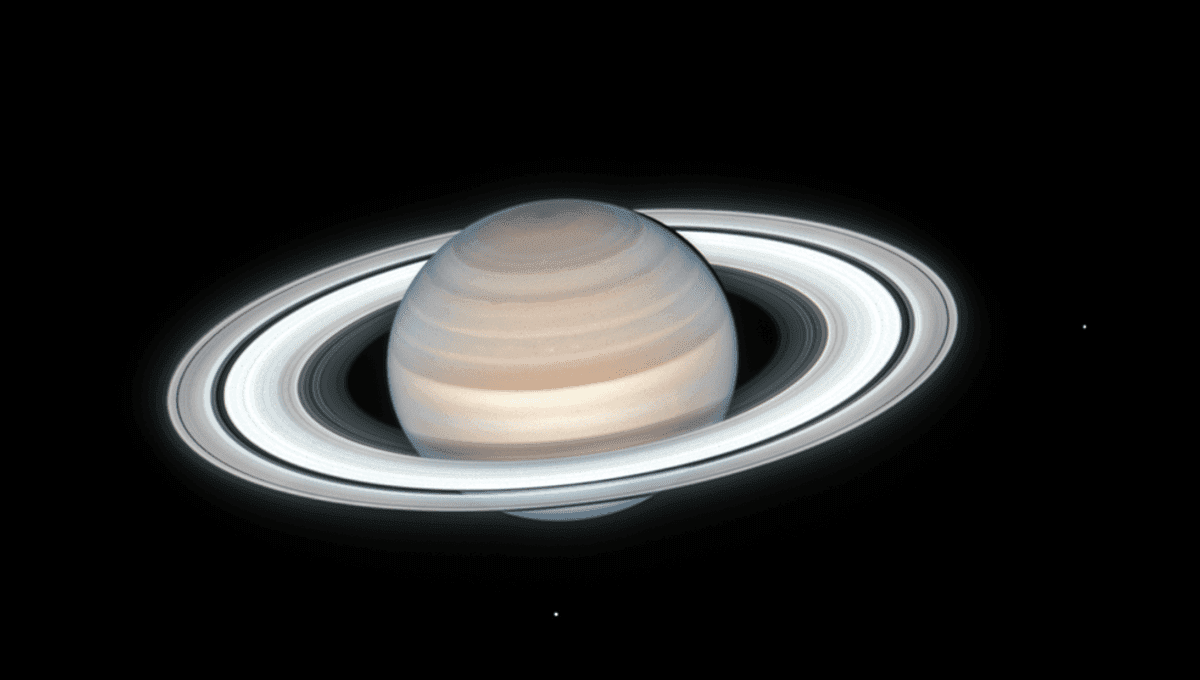
Saturn’s rings are so quintessential to how we visualize the planet that it seems almost wrong to picture the gas giant without them. But it seems likely that the planet was not born with them. Astronomers have presented the most solid evidence yet that the rings are not ancient at all. They formed no more than 400 million years ago.
Saturn, like the rest of the planets, is about 4.5 billion years old (though it’s not the oldest planet). The team used observations from the Cassini mission to work out the age of the rings in an ingenious way: by measuring how much dust they have gathered.
There is dust all over the Solar System and this can end up covering planets, moons, and asteroids. It also ends up covering the ice fragments that make up Saturn’s rings. Based on the data from Cassini, the team found the rings have been gathering dust for only a few hundred million years. The rings are about 98 percent pure water ice, meaning they are too clean to be ancient.
“It’s almost impossible to end up with something so clean,” lead author Sascha Kempf at the University of Colorado Boulder said in a statement. “Think about the rings like the carpet in your house. If you have a clean carpet laid out, you just have to wait. Dust will settle on your carpet. The same is true for the rings.”
According to the team’s calculations, each year the rings should accumulate 1 gram of space dust per square foot. Just focusing on the brightest rings on the planet, they extend from 70,000 to 140,000 kilometers (43,500 to 87,000 miles), equivalent to an area of 30 Earths. That means that about 166 billion tons of dust land on them every year. And you think your shelves are dusty.
But even this huge number is tiny compared to the mass of the rings. It’s literally a sprinkle of dust. They still sparkle.
“We know approximately how old the rings are, but it doesn’t solve any of our other problems,” Kempf said. “We still don’t know how these rings formed in the first place.”
There is an idea that a satellite was ripped apart by Saturn’s gravity. Most of the moon fell down onto the planet and the rest is in the rings, which are also falling down onto the planet and heating up its atmosphere.
Saturn’s rings are a beautiful feature but like many things of beauty, might be an ephemera. In that case, we are lucky that we are in the short cosmic window of several hundred million years where we can see them.
The study is published in Science Advances.
Source Link: Saturn’s Rings Are Much, Much Younger Than Their Planet